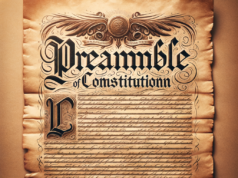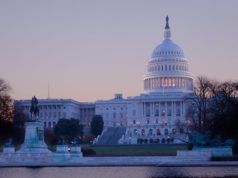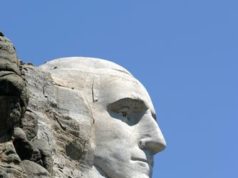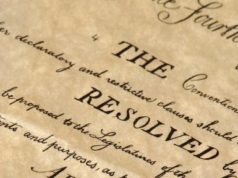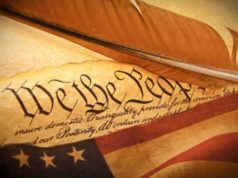Table of Contents
- 1 Who Wrote the Constitution? Unveiling the Architects of America’s Founding Document
- 2 Who Wrote the Constitution?
- 2.0.0.1 The United States Constitution is one of the most important legal documents in American history, serving as a blueprint for the establishment of the federal government and functioning as a document that guides the workings of the country to this day.
- 2.0.0.2 The Constitution was not written by any one individual, but rather it was drafted and revised by several key figures in American history during a historic meeting in Philadelphia known as the Constitutional Convention. The convention was held in 1787 and it was attended by 55 delegates, all of whom were men. These delegates were charged with the task of drafting a constitution that would create a stronger federal government capable of operating more efficiently and effectively than the weak and ineffective government that had been in place up until that time under the Articles of Confederation.
- 2.0.0.3 The primary authors of the Constitution were James Madison, Alexander Hamilton, and John Jay. These three influential men wrote a series of essays known as The Federalist Papers in order to build public support for the Constitution and provide a clear explanation of its principles.
- 2.0.0.4 James Madison is often referred to as the “father of the Constitution.” Madison was a delegate from Virginia, and he played a major role in drafting the initial proposal for the Constitution. He was also instrumental in shaping the final version of the document and in helping to push it through the ratification process.
- 2.0.0.5 Madison played a vital role in shaping the Constitution’s principles and drafting its final version. He proposed the Virginia Plan which was the foundation of the Constitution we know today while arguing for the principle of separation of powers between different branches of government. Madison also played a key role in crafting the Bill of Rights, which were a collection of amendments that were added to the Constitution in order to protect the rights of individuals and limit the power of the federal government.
- 2.0.0.6 Alexander Hamilton also played an important role in shaping the Constitution. Hamilton was a delegate from New York, and he was one of the most outspoken advocates for a strong federal government. He believed that in order for the United States to be successful, it needed a central government that was powerful enough to successfully address the needs of the nation. Hamilton was a key author of The Federalist Papers, which he wrote with Madison and Jay in order to build public support for the Constitution.
- 2.0.0.7 John Jay was a delegate from New York, and he also worked closely with Madison and Hamilton in drafting The Federalist Papers. Jay was an important part of the effort to build public support for the Constitution, and his work on the document helped to convince many Americans that a stronger federal government was necessary.
- 2.0.0.8 While Madison, Hamilton, and Jay are often credited as the primary authors of the Constitution, they were not the only individuals who played an important role in crafting the document. The other 52 delegates who attended the Constitutional Convention also played a significant part in shaping the Constitution.
- 2.0.0.9 One of the most important contributions was made by Benjamin Franklin, who was one of the oldest delegates in attendance. Franklin was a delegate from Pennsylvania, and he played a key role in bridging the gap between the various factions at the convention and helping to secure agreement on key provisions of the Constitution. His efforts helped to ensure that the final product was one that could be accepted by the majority of the delegates.
- 2.0.0.10 Gouverneur Morris was another important delegate who played a vital role in drafting the Constitution. Morris was a delegate from Pennsylvania, and he was tasked with the responsibility of actually writing down the final version of the document. He was responsible for much of the elegant and well-written language that is found in the Constitution, and his work helped to ensure that the document would be both effective and easy to understand.
- 2.0.0.11 George Washington, the first President of the United States, also played an important role in the creation of the Constitution. Washington was the presiding officer at the Constitutional Convention, and his leadership helped to ensure that the delegates were able to reach an agreement on key issues. His presence at the convention also added a great deal of legitimacy to the process and helped to reassure the American people that the final product would be sound and effective.
- 2.0.0.12 Other important figures who played a role in the creation of the Constitution include Roger Sherman, who helped to bridge the gap between smaller and larger states, and James Wilson, who played a key role in shaping the final provisions related to the judiciary.
- 2.0.0.13 In all, the creation of the Constitution was the result of a collaborative effort by a large number of individuals, each of whom played a vital role in shaping the final document. While the contributions of Madison, Hamilton, and Jay are often emphasized, it is important to remember that the Constitution was the product of a group endeavor and that every delegate who attended the Constitutional Convention made important contributions to the creation of one of the most important historical documents in American history.
- 2.0.0.14 Can the Question “Who Wrote the Constitution” Be Answered?
- 2.0.0.15 Upon posing the question “Who Wrote the Constitution”, the answer given concerning the authorship of the Constitution will typically include a response reflecting a communal effort of authorship; the primary recipients of this classification of authorship are typically credited to Thomas Jefferson, James Madison, Thomas Paine, and John Adams – George Washington is credited with the responsibility of overseeing the Constitutional Convention that took place in Philadelphia between May 5th, 1787 and September 17th, 1787.
- 2.0.0.16 Who Wrote the Constitution: Constitution Basics
- 2.0.0.17 The Constitution of the United States is considered to be the foremost piece of the legislature with regard to the implementation and authorization of legality and lawfulness within the United States. The Constitution replaced the preexisting legislative document, which was the Articles of Confederation; this document was responsible for the conveyance of legal process within the United States of America – however, many historians classify the Articles of Confederation to be reactionary to the unpleasant conditions under which citizens of the United States lived with regard to the Monarchical rule of King George II of England prior to the end of the Revolutionary War.
- 2.0.0.18 Who Wrote the Constitution: Alexander Hamilton
- 2.0.0.19 Alexander Hamilton, both a state representative from New York, as well a member of the Federalist Party, has been credited with the initial ideology expressed in the Constitution:
- 2.0.0.20 The practices proposed in his Federalist Papers – a publication authored by Hamilton, James Madison, and John Jay – illustrated a direct portrayal of flaws believed to be latent within the Articles of Confederation
- 2.0.0.21 Who Wrote the Constitution: James Madison
- 2.0.0.22 James Madison was a Federalist – who alongside Alexander Hamilton – was renowned for his contribution to the authorship of the Federalist Papers; James Madison has been considered by many to be the Father of the Constitution:
- 2.0.0.23 As a result of his acumen with regard to political thought, ideology, and theory, Madison applied a majority of his own tenets that were expressed within the text of the Federalist Papers directly to the text of the Constitution; as a result, historians credit James Madison with the provision of the document’s structure
- 2.0.0.24 James Madison is also credited with the conception of the Bill of Rights; due to his conveyance of the absence of a Constitutional Clause providing a system for both the amendment and adjustment of the original text, a clause was subsequently created rectifying these concerns – the actions of James Madison resulted in the proposal of the Bill of Rights in 1789, as well as its subsequent ratification in 1791
- 2.0.0.25 Who Wrote the Constitution: John Adams and Thomas Jefferson
- 2.0.0.26 Thomas Jefferson – the Father of the Declaration of Independence, and John Adams are both recognized as influential framers of the Constitution of the United States:
- 2.0.0.27 John Adams and Thomas Jefferson were both undertaking diplomatic missions in Europe during the creation of the final version of the Constitution of the United States; as a result, neither the signature of Thomas Jefferson – nor that of John Adams appear among the names of the Constitutional signees
Who Wrote the Constitution? Unveiling the Architects of America’s Founding Document
Introduction
The United States Constitution stands as a bedrock document that has shaped the nation’s governance for over two centuries. It is a document revered for its wisdom and foresight, often referred to as the blueprint of American democracy. But who were the architects of this remarkable document, and what were the key influences that led to its creation? In this comprehensive exploration, we delve into the history and individuals behind the drafting of the United States Constitution.
The Genesis of the United States Constitution
Before we can identify the individuals responsible for writing the Constitution, we must understand the historical context that led to its inception. The Constitution emerged as a response to the failures of the Articles of Confederation, the first governing document of the United States. The Articles proved to be insufficient in providing a stable and effective government, leading to economic turmoil, interstate disputes, and a general sense of instability.
As a result, a Constitutional Convention was convened in Philadelphia in 1787 to address these issues and create a new framework for government. The delegates who attended this convention would become the authors of the Constitution, but their backgrounds and motivations were diverse.
The Delegates of the Constitutional Convention
The Constitutional Convention consisted of 55 delegates from 12 of the 13 states (Rhode Island abstained). These delegates were a diverse group, representing various backgrounds, ideologies, and experiences. While it is impossible to detail every delegate in this article, some key figures played pivotal roles in shaping the Constitution:
- George Washington
George Washington, revered as the Father of His Country, presided over the Constitutional Convention. His leadership and presence provided the convention with gravitas and credibility. Although he did not play an active role in drafting the Constitution’s text, his support was instrumental in garnering consensus.
- James Madison
Often referred to as the “Father of the Constitution,” James Madison was a driving force behind the convention and the drafting of the Constitution. Madison’s extensive notes from the convention provide invaluable insights into the debates and compromises that took place. His Virginia Plan, which called for a strong central government, served as a foundation for the Constitution.
- Alexander Hamilton
Alexander Hamilton was a passionate advocate for a strong federal government and a key author of “The Federalist Papers.” Although he represented New York at the convention, his ideas on government and economics greatly influenced the framing of the Constitution.
- Benjamin Franklin
Benjamin Franklin, at the age of 81, was the oldest delegate at the convention. His wisdom and diplomacy helped bridge gaps between differing factions and contributed to the compromises necessary for the Constitution’s success.
- Thomas Jefferson (Not Present)
While not present at the Constitutional Convention, Thomas Jefferson’s ideas and writings, including the Declaration of Independence, had a profound influence on the framers of the Constitution.
These are just a few of the many delegates who participated in the Constitutional Convention. Their diverse backgrounds and perspectives reflect the complexity of the task they faced in crafting a document that would govern a newly formed nation.
The Key Debates and Compromises
The process of drafting the Constitution was far from smooth, and the delegates engaged in intense debates and negotiations. Several key issues required compromise to reach a consensus:
- Representation and the Great Compromise
One of the most significant debates revolved around representation in the legislature. Small states favored equal representation, while larger states wanted representation based on population. The Great Compromise, proposed by Roger Sherman, resolved this by creating a bicameral legislature, with the House of Representatives based on population and the Senate granting equal representation to all states.
Another contentious issue was the treatment of enslaved individuals in determining representation and taxation. The Three-Fifths Compromise counted each enslaved person as three-fifths of a free person for these purposes. This compromise highlighted the deep divides over slavery in America.
- The Commerce Clause and Federal Power
Delegates also debated the extent of federal power, particularly regarding commerce. The Commerce Clause granted Congress the authority to regulate commerce, a vital compromise that allowed for the regulation of interstate trade while preserving state sovereignty.
- The Bill of Rights
The absence of a bill of rights initially divided the delegates. Many were concerned that the Constitution did not adequately protect individual rights. This issue was later addressed through the addition of the Bill of Rights, the first ten amendments to the Constitution.
The Ratification Process
Once the Constitution was drafted, it faced another significant hurdle: ratification by the states. A heated debate ensued between Federalists, who supported the Constitution, and Anti-Federalists, who feared an overly powerful central government. This debate led to a series of essays known as “The Federalist Papers,” authored by Alexander Hamilton, James Madison, and John Jay, which provided arguments in favor of the Constitution’s adoption.
Ultimately, the Constitution was ratified in 1788 when New Hampshire became the ninth state to do so, meeting the requirement for three-fourths of the states to approve.
Conclusion
In conclusion, the question “Who Wrote the Constitution?” has no single answer. The United States Constitution was the result of the collaborative efforts of numerous delegates who attended the Constitutional Convention in 1787. These delegates brought with them a diverse array of ideas, experiences, and backgrounds, which led to the compromises and debates that shaped the Constitution.
The Constitution remains a remarkable document that has stood the test of time, serving as a guiding light for American democracy. It is a testament to the foresight and wisdom of the individuals who crafted it, as well as their ability to find common ground amidst divergent interests. Understanding the history and people behind the Constitution enriches our appreciation for this enduring cornerstone of American governance.
Who Wrote the Constitution?
The U.S. Constitution is a fundamental document of American democracy. It provides the framework for the government and defines the rights and responsibilities of its citizens. The Constitution is one of the most influential documents in American history. However, who wrote it is not as clear-cut as many might think. It is essential to unravel the mystery behind who wrote the most important document in American history. This article aims to do just that.
Background of the Constitution
Before diving into who wrote the Constitution, it is crucial to understand its evolution and the purpose it serves to this day. The Constitution is the supreme law of the United States of America. It was adopted on September 17, 1787, in Philadelphia, Pennsylvania, by 39 of the 55 delegates who attended the Constitutional Convention. The Constitution replaced the Articles of Confederation, the first governing document of the United States, adopted in 1777.
The Constitution, the Bill of Rights, and other amendments define the limits and authorities of the federal government. The Constitution also outlines the rights of the states and the rights of its citizens. The purpose of the Constitution is to establish a system of government that is fair, just, and protective of individual rights. It divides power among three branches of government – the executive, legislative, and judiciary – so that no one branch has too much power.
The Founders
The Founders refers to a group of American leaders who participated in the American Revolution and who were instrumental in the founding of the United States. They are often lionized by historians and other scholars as the quintessential architects of American democracy. Among the Founders, there is a group of men that are often credited with writing the Constitution: James Madison, George Washington, Benjamin Franklin, Alexander Hamilton, and others. But is that an accurate representation of who wrote the Constitution?
The Convention
The Constitution was written during the Constitutional Convention, which was held in Philadelphia, Pennsylvania, from May 25 to September 17, 1787. The convention was attended by 55 delegates from 12 states (Rhode Island did not participate). The delegates were appointed by state legislatures to suggest changes to the Articles of Confederation. However, the delegates soon realized that the Articles of Confederation could not be amended and that they needed to start over. They needed to create a new governing document from scratch.
Delegates were chosen from each state, based on their intelligence, experience, and political beliefs. These delegates were not only politicians but also business owners, lawyers, and military leaders. They gathered in Philadelphia to create the new governing document, which would eventually become the U.S. Constitution.
Who Wrote the Constitution?
The U.S. Constitution is an essential document of American democracy. But who wrote it? When asked this question, many will answer with the names of James Madison, George Washington, or Benjamin Franklin. These men played significant roles in the creation of the Constitution. But the answer is not as simple as listing off a few famous names.
The Committee of Detail
Once the delegates decided to create a new governing document, they elected a committee to draft a proposal for it. The Committee of Detail was responsible for creating the first draft of the Constitution. The committee included five members: John Rutledge (South Carolina), Edmund Randolph (Virginia), Nathaniel Gorham (Massachusetts), Oliver Ellsworth (Connecticut), and James Wilson (Pennsylvania). These men were responsible for drafting the Constitution’s framework.
The committee drafted a document that was based on the Virginia Plan, created by James Madison. The Virginia Plan called for three branches of government, a bicameral legislature, and proportional representation in the legislature. However, the committee made significant changes to the Virginia Plan, including adding the idea of federalism, in which power is divided between the federal government and the states.
The Committee of Style
Once the Committee of Detail had created the first draft of the Constitution, the delegates appointed the Committee of Style to make changes and revise the document. The Committee of Style was tasked with turning the draft into a finished product. The committee included five members: Alexander Hamilton (New York), William Samuel Johnson (Connecticut), Rufus King (Massachusetts), Gouverneur Morris (Pennsylvania), and James Madison (Virginia).
Gouverneur Morris is often credited with writing the Constitution’s final draft. Morris was responsible for creating much of the language and style of the document that we are familiar with today. He was an influential member of the Committee of Style and took an active role in the document’s finalization.
The Role of James Madison
James Madison is often called the “Father of the Constitution.” He played a significant role in the document’s creation and helped lay the groundwork for the new government. Madison is credited with creating the Virginia Plan, which formed the basis of the Constitution’s structure. He also proposed the Bill of Rights, the first ten amendments to the Constitution, which guarantees individual rights and freedoms.
Madison’s notes from the Constitutional Convention are also essential documents for understanding the Constitution’s creation. Madison kept a detailed record of the debates, discussions, and compromises that took place during the convention. His notes provide insight into the thinking of the delegates and the decisions they made.
Conclusion
In conclusion, the U.S. Constitution is the most important document in American history. Many names are associated with the creation of the Constitution, such as James Madison, George Washington, and Benjamin Franklin. However, the work of drafting and creating the Constitution was a group effort. The delegates who attended the Constitutional Convention worked together to create a new governing document that would protect individual rights and define the powers of the federal government.
While no one person can be credited with writing the Constitution, the Committee of Detail and the Committee of Style both played significant roles in its creation. Gouverneur Morris is often credited with writing the Constitution’s final draft, while James Madison laid much of the groundwork for the document’s structure and content. The Constitution’s creation was a defining moment in American history and continues to shape the country to this day.





